
 |
 Parimal Phadke, "Guide to Bharatanatyam Theory : Prarambhik to Praveshika Purna" English | 2018 | ASIN: B07JGT9C2L | EPUB | pages: 52 | 0.1 mb This book aims at all the young students of Bharatanatyam who are preparing for theory exams of Bhartanatyam. It has basic concepts explained in the most reader friendly language. Definitions of terms and terminologies have been explained in brief for the understanding of the young reader. From basic concepts of Tala , laya etc. to brief introduction to all the styles of classical dance of India , it also covers some important topics of hasta-s , viniyoga-s etc. , which are relevant topics for the first three exams of Bharatanatyam .  Group-Analytic Psychotherapy: A Meeting of Minds By Harold Behr, Liesel Hearst(auth.) 2005 | 312 Pages | ISBN: 1861564759 | PDF | 6 MB This book offers practitioners, teachers and students of psychotherapy a detailed and comprehensive account of group analysis. It demystifies the workings of analytic groups and looks at the great stretch of issues and tasks confronting the therapist in the practice of group analytic psychotherapy. Each stage in the process is fully discussed: the assessment and preparation of patients for groups, dynamic administration, beginning and ending a group, and the introduction of new members into an established group. A chapter on psychopathology gives a picture of the main psychiatric conditions which the group therapist is likely to encounter, and offers clear guidelines on how to manage them in a group context. An exposition on the group in full flow provides an unusual insight into the processes which constitute the analytic culture, including the analysis of dreams, the art of interpreting, use of the transference and countertransference, and the place of play, humour and metaphor. Difficult and challenging scenarios, such as dropping out, scapegoating, the silent group member, and monopolisation of the group are treated in depth, as are Large Groups, homogeneous groups, groups for children and adolescents, family therapy, groups in non-clinical settings, and the supervision of group therapy. The impingement of the therapist' s own personal issues is also given attention. The authors have flanked their narrative with accounts of the historical, social and cultural origins of group analysis, and a vision of the future provided by the newer strands of thinking in the field. The text is enlivened by colourful vignettes drawn from the authors' own experiences, and by sharply focused dialogues between the two authors, designed to illustrate their contrasting and complementary perspectives. The book represents a distillation of the authors' long experience in the field of group analytic practice and training in the United Kingdom and internationally.Content: Chapter 1 The Social and Cultural Basis of Group Analysis (pages 1-11): Chapter 2 A Century of Group Therapy (pages 12-27): Chapter 3 Planning an Analytic Group (pages 28-41): Chapter 4 Dynamic Administration (pages 42-54): Chapter 5 The Assessment Interview (pages 55-65): Chapter 6 The Symptom in its Group Context (pages 66-80): Chapter 7 The Start of a New Group (pages 81-91): Chapter 8 A Newcomer to the Group (pages 92-101): Chapter 9 The Group in Action (pages 102-120): Chapter 10 Life Events in the Group (pages 121-132): Chapter 11 Bringing Therapy to an End (pages 133-143): Chapter 12 Therapeutic Pitfalls (pages 144-149): Chapter 13 Challenging Scenarios (pages 150-163): Chapter 14 The Group Analyst in Trouble (pages 164-174): Chapter 15 The Large Group (pages 175-188): Chapter 16 All in the Same Boat: The Value of Homogeneous Groups (pages 189-202): Chapter 17 Groups for Children and Adolescents (pages 203-219): Chapter 18 Family Therapy: A Group?Analytic Perspective (pages 220-230): Chapter 19 The Application of Group Analysis to Non?Clinical Settings (pages 231-236): Chapter 20 The Supervision of Group Therapy (pages 237-246): Chapter 21 The Group Analyst as a Professional (pages 247-254): Chapter 22 The Changing Landscape of Group Analysis (pages 255-268): 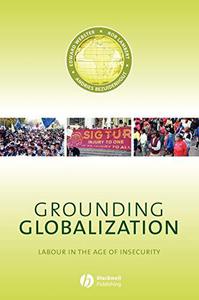 Grounding Globalization: Labour in the Age of Insecurity By Edward Webster, Rob Lambert, Andries Bezuidenhout(auth.), Noel Castree(eds.) 2008 | 275 Pages | ISBN: 140512914X | PDF | 4 MB *Winner of the 2009 Distinguished Scholarly Monograph Prize, awarded by the American Sociological Association Labor and Labor Movements section* Claims have been made on the emergence of a new labour internationalism in response to the growing insecurity created by globalization. However, when persons face conditions of insecurity they often turn inwards. The book contains a warning and a sign of hope. Some workers become fatalistic, even xenophobic. Others are attempting to globalize their own struggles. Examines the claim that a new labour internationalism is emerging by grounding the book in evidence, rather than assertion Analyzes three distinct places - Orange, Australia; Changwon, South Korea; and Ezakheni, South Africa - and how they dealt with manufacturing plants undergoing restructuring Explores worker responses to rising levels of insecurity and examines preconditions for the emergence of counter-movements to such insecurities Highlights the significance of 'place' and 'scale', and demonstrates how the restructuring of multi-national corporations, and worker responses to this, connect the two concepts Content: Chapter 1 The Polanyi Problem and the Problem with Polanyi (pages 1-21): Chapter 2 Manufacturing Matters (pages 27-50): Chapter 3 The Return of Market Despotism (pages 51-77): Chapter 4 Citizenship Matters (pages 78-103): Chapter 5 Strong Winds in Ezakheni (pages 109-126): Chapter 6 Escaping Social Death in Changwon (pages 127-140): Chapter 7 Squeezing Orange (pages 141-156): Chapter 8 History Matters (pages 161-185): Chapter 9 Grounding Labour Internationalism (pages 186-211): Chapter 10 The Necessity for Utopian Thinking (pages 212-227):
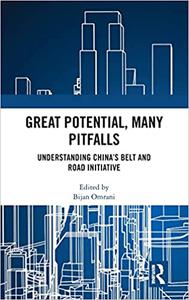 Bijan Omrani, "Great Potential, Many Pitfalls: Understanding China's Belt and Road Initiative" English | ISBN: 0367516578 | 2021 | 108 pages | EPUB | 1219 KB China's Belt and Road Initiative (BRI), China's globe-girdling infrastructure and trade corridor project, is a rare watershed in international affairs. It affects, whether directly or indirectly, nearly the entire world, directly involving more than 60 countries, nearly 4.5 billion people (about two-thirds of the world's population), up to $8 trillion, and around 40 per cent of the global economy. 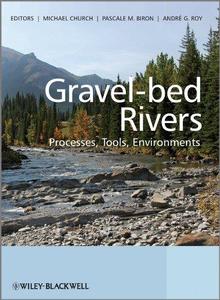 Gravel-Bed Rivers: Processes, Tools, Environments By 2012 | 585 Pages | ISBN: 0470688904 | PDF | 15 MB Gravel-Bed Rivers: Processes, Tools, Environments presents a definitive review of current knowledge of gravel-bed rivers, derived from the 7th International Gravel-bed Rivers Workshop, the 5-yearly meeting of the world's leading authorities in the field. Each chapter in the book has been specifically commissioned to represent areas in which recent progress has been made in the field. The topics covered also represent a coherent progression through the principal areas of the subject (hydraulics; sediment transport; river morphology; tools and methods; applications of science).Definitive review of the current knowledge of gravel-bed rivers Coverage of both fundamental and applied topics Edited by leading academics with contributions from key researchers Thoroughly edited for quality and consistency to provide coherent and logical progression through the principal areas of the subject. Content: Chapter 1 Secondary Flows in Rivers: Theoretical Framework, Recent Advances, and Current Challenges (pages 1-22): Vladimir Nikora and Andre G. RoyChapter 2 Secondary Flows in Rivers: The Effect of Complex Geometry (pages 23-30): Bruce MacVicarChapter 3 Aspects of Secondary Flow in Open Channels: A Critical Literature Review (pages 31-35): Athanasios (Thanos) N. PapanicolaouChapter 4 Gravel Transport in Granular Perspective (pages 37-55): Philippe Frey and Michael ChurchChapter 5 On Gravel Exchange in Natural Channels (pages 56-67): Judith K. HaschenburgerChapter 6 Morphodynamics of Bars in Gravel?Bed Rivers: Bridging Analytical Models and Field Observations (pages 69-89): Guido Zolezzi, Walter Bertoldi and Marco TubinoChapter 7 Field Observations of Gravel?Bed River Morphodynamics: Perspectives and Critical Issues for Testing of Models (pages 90-95): Nicola SurianChapter 8 Morphodynamics of Bars in Gravel?Bed Rivers: Coupling Hydraulic Geometry and Analytical Models (pages 96-100): Robert G. MillarChapter 9 Modelling Sediment Transport and Morphodynamics of Gravel?Bed Rivers (pages 101-115): Erik MosselmanChapter 10 The Potential of Using High?Resolution Process Models to Inform Parameterizations of Morphodynamic Models (pages 116-122): Richard J. HardyChapter 11 The Importance of Off?Channel Sediment Storage in 1?D Morphodynamic Modelling (pages 123-134): J. Wesley LauerChapter 12 Stream Restoration in Gravel?Bed Rivers (pages 135-149): Peter R. WilcockChapter 13 River Restoration: Widening Perspectives (pages 150-159): Nicholas J. CliffordChapter 14 Restoring Geomorphic Resilience in Streams (pages 160-164): Noah P. SnyderChapter 15 The Geomorphic Response of Gravel?Bed Rivers to Dams: Perspectives and Prospects (pages 165-181): Gordon E. GrantChapter 16 Mitigating Downstream Effects of Dams (pages 182-189): David GaeumanChapter 17 River Geomorphology and Salmonid Habitat: Some Examples Illustrating their Complex Association, from Redd to Riverscape Scales (pages 191-215): Michel LapointeChapter 18 Incorporating Spatial Context into the Analysis of Salmonid-Habitat Relations (pages 216-224): Christian E. Torgersen, Colden V. Baxter, Joseph L. Ebersole and Robert E. GresswellChapter 19 Animals and the Geomorphology of Gravel?Bed Rivers (pages 225-241): Stephen P. Rice, Matthew F. Johnson and Ian ReidChapter 20 Geomorphology and Gravel?Bed River Ecosystem Services: Workshop Outcomes (pages 242-257): Normand Bergeron and Joanna EyquemChapter 21 Remote Sensing of the Hydraulic Environment in Gravel?Bed Rivers (pages 259-285): W. Andrew MarcusChapter 22 LiDAR and ADCP Use in Gravel?Bed Rivers: Advances Since GBR6 (pages 286-302): David J. Milan and George L. HeritageChapter 23 Remotely Sensed Topographic Change in Gravel Riverbeds with Flowing Channels (pages 303-314): D. Murray HicksChapter 24 Modern Digital Instruments and Techniques for Hydrodynamic and Morphologic Characterization of River Channels (pages 315-341): Marian Muste, Dongsu Kim and Venkatesh MerwadeChapter 25 Mapping Water and Sediment Flux Distributions in Gravel?Bed Rivers Using ADCPs (pages 342-350): Colin D. RennieChapter 26 Recent Advances in the Dynamics of Steep Channels (pages 351-377): Francesco Comiti and Luca MaoChapter 27 Examining Individual Step Stability within Step?Pool Sequences (pages 378-385): Joanna Crowe CurranChapter 28 Alluvial Steep Channels: Flow Resistance, Bedload Transport Prediction, and Transition to Debris Flows (pages 386-397): Dieter RickenmannChapter 29 Semi?Alluvial Channels and Sediment?Flux?Driven Bedrock Erosion (pages 399-418): Jens M. TurowskiChapter 30 Transport Capacity, Bedrock Exposure, and Process Domains (pages 419-423): Thomas E. LisleChapter 31 Nomenclature, Complexity, Semi?Alluvial Channels and Sediment?Flux?Driven Bedrock Erosion (pages 424-431): Lyubov V. Meshkova, Paul A. Carling and Thomas Buffin?BelangerChapter 32 Changes in Channel Morphology Over Human Time Scales (pages 433-463): John M. BuffingtonChapter 33 Channel Response and Recovery to Changes in Sediment Supply (pages 464-473): Marwan A. Hassan and Andre E. ZimmermannChapter 34 Alluvial Landscape Evolution: What Do We Know About Metamorphosis of Gravel?Bed Meandering and Braided Streams? (pages 474-501): Francois Metivier and Laurie BarrierChapter 35 Differences in Sediment Supply to Braided and Single?Thread River Channels: What Do the Data Tell Us? (pages 502-511): John Pitlick, Erich R. Mueller and Catalina SeguraChapter 36 Can We Link Cause and Effect in Landscape Evolution? (pages 512-522): Thomas J. Coulthard and Marco J. Van De WielChapter 37 River?Ice Effects on Gravel?Bed Channels (pages 523-540): Robert Ettema and Edward W. KempemaChapter 38 Is There a Northern Signature on Fluvial Form? (pages 541-545): James P. McNamaraChapter 39 Long?Term and Large?Scale River?Ice Processes in Cold?Region Watersheds (pages 546-554): Etienne Boucher, Yves Begin, Dominique Arseneault and Taha B. M. J. Ouarda 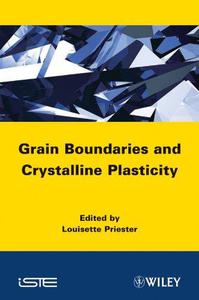 Grain Boundaries and Crystalline Plasticity By 2011 | 348 Pages | ISBN: 1848213271 | PDF | 32 MB This book explores the fundamental role of grain boundaries in the plasticity of crystalline materials, providing a multi-scale approach to plasticity to facilitate understanding. It starts with the atomic description of a grain boundary, moves on to the elemental interaction processes between dislocations and grain boundaries, and finally shows how the microscopic phenomena influence the macroscopic behaviors and constitutive laws. Drawing on topics from physical, chemical, and mechanical disciplines, this work also explains properties of deformation at low and high temperature, creep, fatigue, and rupture.Content: Chapter 1 Grain Boundary Structures and Defects (pages 1-46): Chapter 2 Elementary Grain Boundary Deformation Mechanisms (pages 47-107): Chapter 3 Grain Boundaries in Cold Deformation (pages 109-163): Chapter 4 Creep and High Temperature Plasticity (pages 165-215): Chapter 5 Intergranular Fatigue (pages 217-280): Chapter 6 Intergranular Segregation and Crystalline Material Fracture (pages 281-325): Chapter 1 Bicrystallography and Topological Characterization of Interfacial Defects (pages 327-332): Chapter 2 Appendices of Chapter 3 (pages 333-339):
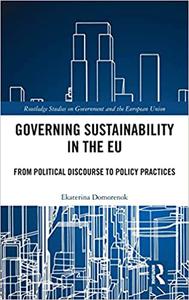 Ekaterina Domorenok, "Governing Sustainability in the EU: From Political Discourse to Policy Practices " English | ISBN: 113823155X | 2018 | 190 pages | EPUB | 1196 KB Governing Sustainability in the EU examines the recent novelties in the EU agenda for sustainable development, illustrating how the process of policy change has occurred at different levels, comprising general priorities, specific objectives and policy instruments.  Lester Faigley, Jack Selzer, "Good Reasons with Contemporary Arguments" English | 2017 | pages: 559 | ISBN: 0134392876 | PDF | 19,6 mb Good Reasons with Contemporary Arguments [RENTAL EDITION]
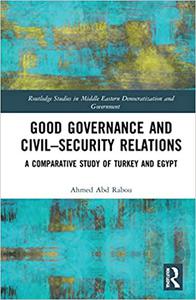 Ahmed Abd Rabou, "Good Governance and Civil-Security Relations: A Comparative Study of Turkey and Egypt " English | ISBN: 0367445247 | 2020 | 186 pages | EPUB | 1186 KB Developing the traditional civil-military relations approach to include security actors, the book compares the style of civil-security relations in both Egypt and Turkey. The volume comprehends the competition between civilian actors and military and security actors to impose control over the political regimes in transition and how this is related to the issue of good governance and democratization.  Glucose Syrups: Technology and Applications By Peter Hull(auth.) 2010 | 375 Pages | ISBN: 1405175567 | PDF | 6 MB Glucose syrups (commonly known as corn syrups in North America) are derived from starch sources such as maize, wheat and potatoes. Offering alternative functional properties to sugar as well as economic benefits, glucose syrups are extremely versatile sweeteners, and are widely used in food manufacturing and other industries. They are a key ingredient in confectionery products, beer, soft drinks, sports drinks, jams, sauces and ice creams, as well as in pharmaceuticals and industrial fermentations. This book brings together all the relevant information on the manufacture and use of glucose syrups. Drawing on forty years' experience in the international glucose industry, the author provides a valuable reference for all those involved in the processing and buying of these syrups, and for scientists involved in the manufacture of a full range of food (and some non-food) products in which the syrups are ingredients. The emphasis is on practical information - recipes are included where relevant in the applications chapters, and appendices offer commonly-used calculations and useful data. Food technologists can use the book to make choices about the most suitable glucose syrup to use in a particular application, and also to adapt recipes in order to replace sugar (sucrose) or other ingredients. A glossary of terms reflecting the international terminology of the industry completes the book. Content: Chapter 1 History of Glucose Syrups (pages 1-7): Chapter 2 Fructose Containing Syrups (pages 9-17): Chapter 3 Glucose Syrup Manufacture (pages 19-44): Chapter 4 Explanation of Glucose Syrup Specifications (pages 45-60): Chapter 5 Application Properties of Glucose Syrups (pages 61-75): Chapter 6 Syrup Applications: an Overview (pages 77-100): Chapter 7 Trehalose (pages 101-106): Chapter 8 Sugar Alcohols: an Overview (pages 107-117): Chapter 9 Glucose Syrups in Baking and Biscuit Products (pages 119-132): Chapter 10 Glucose Syrups in Brewing (pages 133-148): Chapter 11 Glucose Syrups in Confectionery (pages 149-173): Chapter 12 Glucose Syrups in Fermentations: an Overview (pages 175-184): Chapter 13 Glucose Syrups in Ice Creams and Similar Products (pages 185-202): Chapter 14 Glucose Syrups in Jams (pages 203-219): Chapter 15 Glucose Syrups in Tomato Products and other Types of Dressings and Sauces (pages 221-226): Chapter 16 Glucose Syrups in Soft Drinks (pages 227-238): Chapter 17 Glucose Syrups in Health and Sports Drinks (pages 239-249): Chapter 18 Carbohydrate Metabolism and Caloric Values (pages 251-260): Chapter 19 Caramel - the Colouring (pages 261-263): |